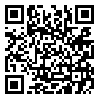Volume 11, Issue 43 (2014)
FSCT 2014, 11(43): 10-1 |
Back to browse issues page
Download citation:
BibTeX | RIS | EndNote | Medlars | ProCite | Reference Manager | RefWorks
Send citation to:



BibTeX | RIS | EndNote | Medlars | ProCite | Reference Manager | RefWorks
Send citation to:
Optimization of extraction and concentration methods of enteric viruses from the surface of ready to Eat vegetables using MS2 coliphage as a model
Bahreini, M.1 , Habibi Najafi, M. B.2; Bassami, M. R.3; Yavarmanesh, M2.. FSCT 2014; 11 (43) :10-1
URL: http://fsct.modares.ac.ir/article-7-12204-en.html
URL: http://fsct.modares.ac.ir/article-7-12204-en.html
Abstract: (3810 Views)
Enteric viruses are among those pathogens which are responsible for a significant portion of food-borne diseases. Unfortunately, robust, quantitative methods for sampling and analysis of viruses in foods are not well-established. As a result, epidemiologically determined etiologies or pathogen sources in food-borne outbreaks are rarely confirmed by routine virological analysis. In this study, MS2 coliphage was used as a model for enteric viruses. In addition, elution method of virus from the surface of vegetables by different buffers was investigated. Among ten buffers used for elution of the coliphage, four buffers (0.05 M glycin and 150mM NaCl, pH 9.5; 0.05 M glycin and 1%(w/v)beef extract, 3%(w/v)beef extract in pH 9.5 or 7.5) showed the highest coliphage recovery (82%, 88%, 92% and 82% respectively). Furthermore, the coliphage concentration index using polyethylene glycol [10%(w/v)] and NaCl (0.3M) was also evaluated. Up to 80% of the inculated of coliphages were recovered and confirmed that type of buffer had no effect on the concentration index. According to our results, incubation time in solution of polyethylene glycol was an important factor in concentration index. The highest index of concentration was detected in overnight incubation at 4°C.
Received: 2010/12/29 | Accepted: 2011/12/29 | Published: 2014/06/22
| Rights and permissions | |
 |
This work is licensed under a Creative Commons Attribution-NonCommercial 4.0 International License. |





